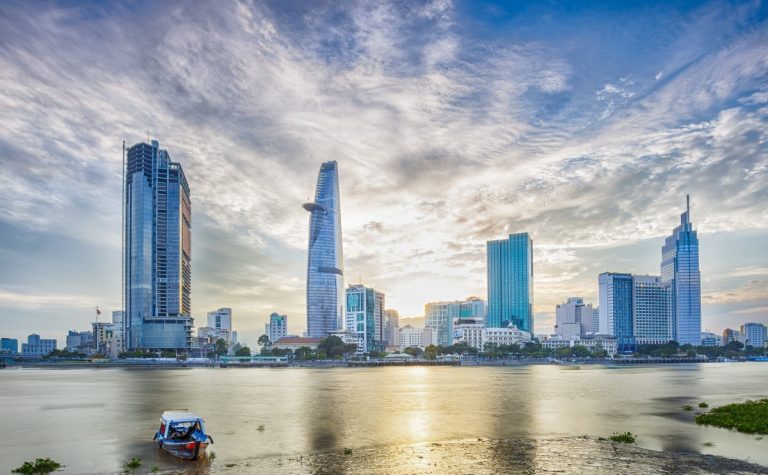
Vietnam has seen exponential growth in its urban development over the past 30 years. According to figures cited in Vietnam Plus, national urban growth is drastically evolving; in 2009, the rate of progression was 19.6 percent with 629 urban areas, while in 2016, the rate soared to around 36.6 percent, with a total of 802 citified settlements.
Nowhere is this expansion more evident than in Ho Chi Minh City, described as ‘a high-octane city of commerce and culture’ by Lonely Planet.
“The architecture of Ho Chi Minh City is a splendid mix of Vietnam’s historical heritage, from French colonial villas to modern steel and glass monuments,” writes City Pass Guide. “The top architectural sites for tourists date back to a time when Saigon, the ‘Pearl of Indochina’ was the capital of French Indochina,” it adds. “More has been added to the cultural heritage since then and we see interesting times ahead in terms of modern architecture.”
The city’s design culture is creative and distinct, moving in line with the pace of globalisation which is rapidly sweeping the world. Capitalising on its unique position amid the buildings of this rising metropolis, RMIT University’s Vietnam designers see this city as a real-life living laboratory, giving architecture students the chance to apply their knowledge and expertise in one of the fastest-developing nations on the globe.
“RMIT University Vietnam brings a world-class education and globalised study environment to the heart of Asia,” the institution states. “We are part of Melbourne-based university RMIT – Australia’s biggest tertiary institution,” it adds, highlighting how its graduates consistently break new ground in their desired field of interest.
Residing in Vietnam since the 1990s, RMIT displays a strong engagement with the cities in which it is based. Shaped by the notions of adventurous practice and differentiation, this year will see the expansion of the prestigious Master of Architecture into Vietnam – an inspiring postgraduate degree that blends design experimentation with real-world practice. Growing on the professional program hosted by the Melbourne campus, this advanced two-year program brings ambitious students together with award-winning architects and internationally-reputed academics, collaborating on speculative and real life projects with local, regional and international partners.
RMIT’s Master of Architecture differs from other programmes in the region, drawing more on design processes than solely a technical focus. The architectural journey into the Asian region began with the practice focused PhD in Architecture and Design, delivered by experienced practitioners from all cultures and backgrounds. With options to study in Ho Chi Minh, Barcelona and Melbourne, the course is as global as it is intrinsically research and practice driven, offering a distinctive study experience that is truly unparalleled.
Recognising the value of this cutting-edge, contemporary research degree, RMIT planned the Master of Architecture to follow the respected PhD program and extend its design engagement with Asia.
“The urban context of Vietnam is unique, fast-paced, and full of colours, sounds, smells, patterns and liveliness,” says Thong Huynh, an outstanding Master of Architecture graduate from RMIT’s Melbourne-based campus. “This, together with the diversity in cultural background will give RMIT Vietnam students inspiration in design thinking, and a great source of materials and ideas to explore.

Image courtesy of RMIT
“The most important thing I learned and practised through my five years of study at RMIT is to ‘learn global, act local’,” he adds, “and I was able to translate this to my new career when I returned home from Melbourne to Vietnam. Absorbing knowledge and ideas from an international perspective, and successfully applying these skills to local conditions truly helps me advance my career,” the graduate concludes. “…I’m proud to have trained our local staff to have a global outlook, as this is very important for our future growth.”
Ho Chi Minh City will be a future a focal point for ingenious architectural design amid rapid urban growth. Specialised graduates from schools like RMIT – an institution that actively embraces the concepts of experimental practice – will be placed at the forefront of industry’s contemporary developments.
Follow RMIT Vietnam on Facebook, Twitter, Instagram, YouTube, Flickr, Google+ and LinkedIn
Liked this? Then you’ll love these…
APAC leaders of Architectural education
Structuring our cities: 3 of the UK’s most innovative providers of architectural education







